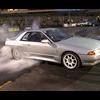R35 Horsepower Figures
Announcements
-
Similar Content
-
Latest Posts
-
By pacman_1219 · Posted
Nah I did not will have to another time. I only installed a blitz return flow FMIC probably 1000kms ago. When I took the old piping off there was basically no oil in piping. At this stage it has to be valve stem seals. When I roll down a big hill in gear and then throttle down the bottom, I get the same puff of smoke. -
I believe when they added coolant to cool the turbo it negated the need for turbo timers as water continues to flow even when the engine is shut off I forget the actual terminology, I'll just say the coolant "percolates" through the turbo which stops the oil cooking itself to death Well....that's how I see it, as all the plant at work that has coolant lines to the turbo can be shut down straight away, whereas the older plant with only oil feed to the turbo you need to idle it for a few minutes
-
Never an issue with boost control. No weird boost issues pre throttle at partial throttle like you're suggesting. It worked. As for all the turbo damage claims, they all were started by aftermarket BOV companies. At least turbo timer companies had SOME truth about them, except people failed to realise that except for in extreme circumstances, that small amount of driving you do to park/ through pit lane etc, is enough to not have a need for a turbo timer.
-








Recommended Posts
Create an account or sign in to comment
You need to be a member in order to leave a comment
Create an account
Sign up for a new account in our community. It's easy!
Register a new accountSign in
Already have an account? Sign in here.
Sign In Now